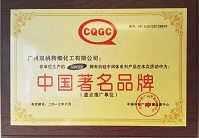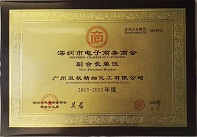
![]() E-mail: admin@gz-chemical.com
E-mail: admin@gz-chemical.com
Email us,best price and silane solutions for you!
Tel:+86 (20) 29035969

![]() E-mail: admin@gz-chemical.com
E-mail: admin@gz-chemical.com
Email us,best price and silane solutions for you!
Tel:+86 (20) 29035969


Microscopic crystalline structures called metal-organic frameworks (MOFs) may provide
way to solve one of the biggest problems in methane functionalization catalysis, an
economically important chemical process.
The nation's shale gas production boom of recent years has led many researchers to look
for new ways to functionalize methane—i.e., transform it into something more valuable. O
ne such product could be methanol.
"There are a lot of ways to functionalize methane, but one form that would be cost effective
and abundant is the transformation of methane to methanol," said Max Delferro, the catalysis
science program group leader at the U.S. Department of Energy's (DOE) Argonne National
Laboratory. "Unfortunately, methane is one of the most stable molecules. It's difficult to
activate methane."
But now, a team led by Delferro and Omar Farha, associate professor of chemistry at
Northwestern University, has demonstrated a new way to activate methane with MOFs, as a
result of their joint efforts in the Inorganometallic Catalyst Design Center, a DOE-funded
Energy Frontier Research Center. They and seven co-authors recently published their
method in Nature Catalysis.
"This example showcases how designing crystalline materials, in particular MOFs, will lead
to solutions of complex but exciting opportunities," said Farha, who is also president and co-
founder of NuMat Technologies.
A methane molecule consists of one carbon atom linked to four hydrogen atoms. But
functionalizing carbon-hydrogen bonds in methane is a particularly challenging process that
most known catalysts can achieve only under extremely acidic and/or oxidizing conditions.
The Argonne-Northwestern team, however, has shown for the first time that MOFs can
selectively produce a specific boron-infused methane product by shape-selective catalysis,
a widely used industrial technique for chemicals synthesis and hydrocarbon processing.
Shape-selective catalysis can distinguish between molecules that are slightly different in size
and may selectively form only one desired chemical product. But for the technique to work,
the pore space of the catalyst must be comparable to the size of the molecules involved in
the reaction.
Since the 1960s, zeolites have been commonly used to perform this type of catalysis. Zeolit
es are microporous crystalline minerals that often include silicon, aluminum and oxygen. They
are commonly used as commercial adsorbents and catalysts and have a cage-like framework
in which reactant molecules can become trapped. But if the molecules are too big to fit inside
the framework, no catalysis can occur.
Guangzhou Double Peach Fine Chemical Co.,Ltd
Address: No 3401 Huangpu East Road, Huangpu District, Guangzhou, China
Tel:+86 (20) 29035969 Fax:+86(20)29035979
Tel/Wechat/Whatsapp:0086 13826126978 admin@gz-chemical.com